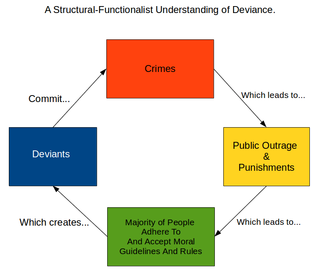
Medical psychology, or Medicopsychology, is the application of psychological principles to the practice of medicine, primarily drug-oriented, for both physical and mental disorders.

Applied psychology is the use of psychological methods and findings of scientific psychology to solve practical problems of human and animal behavior and experience. Mental health, organizational psychology, business management, education, health, product design, ergonomics, and law are just a few of the areas that have been influenced by the application of psychological principles and findings. Some of the areas of applied psychology include clinical psychology, counseling psychology, evolutionary psychology, industrial and organizational psychology, legal psychology, neuropsychology, occupational health psychology, human factors, forensic psychology, engineering psychology, school psychology, sports psychology, traffic psychology, community psychology, and medical psychology. In addition, a number of specialized areas in the general field of psychology have applied branches. However, the lines between sub-branch specializations and major applied psychology categories are often blurred. For example, a human factors psychologist might use a cognitive psychology theory. This could be described as human factor psychology or as applied cognitive psychology.

Forensic psychology, a subfield of psychology, involves the application of psychological knowledge and methods to both civil and criminal legal questions. Traditionally, it has a broad definition as well as a narrow definition. The broader classification states that forensic psychology involves the application of all psychological areas of research to the legal field, while the narrower definition characterizes forensic psychology as “The application of clinical specialties to legal institutions and people who come into contact with the law.” While the American Psychological Association (APA) officially recognized forensic psychology as a specialty under the narrower definition in 2001, the Specialty Guidelines for Forensic Psychologists were revised in 2013 and now include all subfields of psychology that apply "the scientific, technical, or specialized knowledge of psychology to the law."
Criminal psychology, also referred to as criminological psychology, is the study of the views, thoughts, intentions, actions and reactions of criminals and all who participate in criminal behavior.

Forensic psychiatry is a subspeciality of psychiatry and is related to criminology. It encompasses the interface between law and psychiatry. According to the American Academy of Psychiatry and the Law, it is defined as "a subspecialty of psychiatry in which scientific and clinical expertise is applied in legal contexts involving civil, criminal, correctional, regulatory, or legislative matters, and in specialized clinical consultations in areas such as risk assessment or employment." A forensic psychiatrist provides services – such as determination of competency to stand trial – to a court of law to facilitate the adjudicative process and provide treatment, such as medications and psychotherapy, to criminals.
A behavior modification facility is a residential educational and treatment institution enrolling adolescents who are perceived as displaying antisocial behavior, in an attempt to alter their conduct.

Monroe Correctional Complex is a Washington State Department of Corrections men's prison located in Monroe, Washington, United States. With an operating capacity of 2,500, it is the second largest prison in the state. It opened in 1910, 21 years after statehood.
Police psychology, also referred to as "police and public safety psychology," was formally recognized in 2013 by the American Psychological Association as a specialty in professional psychology. The goal of police psychology is to ensure law enforcement is able to perform their jobs safely, effectively, ethically, and lawfully.

The Texas Department of Criminal Justice (TDCJ) is a department of the government of the U.S. state of Texas. The TDCJ is responsible for statewide criminal justice for adult offenders, including managing offenders in state prisons, state jails, and private correctional facilities, funding and certain oversight of community supervision, and supervision of offenders released from prison on parole or mandatory supervision. The TDCJ operates the largest prison system in the United States.

Forensic psychotherapy is the application of psychological knowledge to the treatment of offender-patients who commit violent acts against themselves or others. This form of treatment allows for a therapist to potentially understand the offender and their mental state. It gives the individual providing treatment the opportunity to examine further whether the offender’s criminal behavior was a conscious act or not, what exactly their association with violent behavior is, and what possible motives could have driven them. The discipline of forensic psychotherapy is one that requires the involvement of individuals other than simply the therapist and patient. A therapist may collaborate with other professionals, such as physicians, social workers, and other psychologists in order to best serve the offenders’ needs. Whether the treatment is successful or not relies on a multitude of things, but typically ensuring that a systemic approach is taken and that all involved in the treatment process are well informed and supportive has proven to be the most effective. In addition to group work, forensic psychotherapy may also involve therapeutic communities, individual interaction with victims as well as offenders, and family work. In order for this specialized therapy to be as effective as possible, it demands the compliance of not only the patient and therapist, but of the rest of society as well. The main focus of forensic psychotherapy is to obtain a psychodynamic understanding of the offender in order to attempt to provide them with an effective form of treatment. Guidelines have been set to ensure proficiency in the field of Forensic Psychology.

Military psychology is a specialization within psychology that applies psychological science to promote the readiness of military members, organizations, and operations. Military psychologists provide support to the military in many ways, including through direct clinical care, consultation to military commanders, teaching others and supporting military training, and through research relevant to military operations and personnel. The stressors associated with military service are many to include exposure to high-risk training and combat. As such, psychologists are critical support components that assist military leaders in designing appropriate training programs, providing oversight to those programs, and assisting military members as they navigate the challenges of military training and military life in general. Most issues facing military members are not that dissimilar from those faced by their civilian counterparts. Specific examples of the issues faced by military personnel that may be somewhat distinct include posttraumatic stress disorder (PTSD) associated with combat, or guilt and family/partner difficulties accompanying extended or frequent deployments due to separation. Clinical providers in military psychology are often focused on the treatment of stress, fatigue, and other personal readiness issues.

The Department of Public Safety and Corrections (DPS&C) is a state law enforcement agency responsible for the incarceration of inmates and management of facilities at state prisons within the state of Louisiana. The agency is headquartered in Baton Rouge. The agency comprises two major areas: Public Safety Services and Corrections Services. The Secretary, who is appointed by the Governor, serves as the department's chief executive officer. The Corrections Services Deputy Secretary, Undersecretary, and Assistant Secretaries for the Office of Adult Services and the Office of Youth Development report directly to the Secretary. Headquarters Administration consists of centralized Divisions that support the management and operations of the adult and juvenile institutions, adult and juvenile probation and parole district offices, and all other services provided by the department.
Compassionate release is a process by which inmates in criminal justice systems may be eligible for immediate early release on grounds of "particularly extraordinary or compelling circumstances which could not reasonably have been foreseen by the court at the time of sentencing". Compassionate release procedures, which are also known as medical release, medical parole, medical furlough and humanitarian parole, can be mandated by the courts or by internal corrections authorities. Unlike regular parole, compassionate release is not based on a prisoner's behavior or sentencing, but on medical or humanitarian changes in the prisoner's situation.
Prison overcrowding is a social phenomenon occurring when the demand for space in prisons in a jurisdiction exceeds the capacity for prisoners. The issues associated with prison overcrowding are not new, and have been brewing for many years. During the United States' War on Drugs, the states were left responsible for solving the prison overcrowding issue with a limited amount of money. Moreover, federal prison populations may increase if states adhere to federal policies, such as mandatory minimum sentences. On the other hand, the Justice Department provides billions of dollars a year for state and local law enforcement to ensure they follow the policies set forth by the federal government concerning U.S. prisons. Prison overcrowding has affected some states more than others, but overall, the risks of overcrowding are substantial and there are solutions to this problem.

Incarceration prevention refers to a variety of methods aimed at reducing prison populations and costs while fostering enhanced social structures. Due to the nature of incarceration in the United States today caused by issues leading to increased incarceration rates, there are methods aimed at preventing the incarceration of at-risk populations.

In the United States penal system, upwards of 20 percent of state and federal prison inmates and 18 percent of local jail inmates are kept in solitary confinement or another form of restrictive housing at some point during their imprisonment. Solitary confinement generally comes in one of two forms: disciplinary segregation, in which inmates are temporarily placed in solitary confinement as punishment for rulebreaking; and administrative segregation, in which prisoners deemed to be a risk to the safety of other inmates, prison staff, or to themselves are placed in solitary confinement for extended periods of time, often months or years.
Mentally ill people are overrepresented in United States jail and prison populations relative to the general population. There are three times more seriously mentally ill persons in jails and prisons than in hospitals in the United States. The exact cause of this overrepresentation is disputed by scholars; proposed causes include the deinstitutionalization of mentally ill individuals in the mid-twentieth century; inadequate community mental health treatment resources; and the criminalization of mental illness itself. The majority of prisons in the United States employ a psychiatrist and a psychologist. While much research claims mentally ill offenders have comparable rates of recidivism to non-mentally ill offenders, other research claims that mentally ill offenders have higher rates of recidivism. Mentally ill people experience solitary confinement at disproportionate rates and are more vulnerable to its adverse psychological effects. Twenty-five states have laws addressing the emergency detention of the mentally ill within jails, and the United States Supreme Court has upheld the right of inmates to mental health treatment.
Gender-responsive prisons are prisons constructed to provide gender-specific care to incarcerated women. Contemporary sex-based prison programs were presented as a solution to the rapidly increasing number of women in the prison industrial complex and the overcrowding of California's prisons. These programs vary in intent and implementation and are based on the idea that female offenders differ from their male counterparts in their personal histories and pathways to crime. Multi-dimensional programs oriented toward female behaviors are considered by many to be effective in curbing recidivism.
People in prison are more likely than the general United States population to have received a mental disorder diagnosis, and women in prison have higher rates of mental illness and mental health treatment than do men in prison. Furthermore, women in prisons are three times more likely than the general population to report poor physical and mental health. Women are the fastest growing demographic of the United States prison population. As of 2019, there are about 222,500 women incarcerated in state and federal prisons in the United States. Women comprise roughly 8% of all inmates in the United States.

Apryl A. Alexander is an American clinical and forensic psychologist who is an associate professor at the University of Denver. Alexander directs students at the Denver Forensic Institute for Research, Service and Training, and engages in clinical psychology practice. She is co-founder of the University of Denver's Prison Arts Initiative where incarcerated individuals engage in a therapeutic, educational arts curricula.








